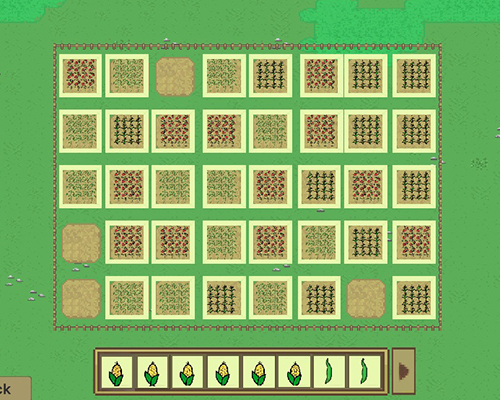Assistant Professor of Statistics Tyler George and one of his classes took part in a newly published study exploring how a unique computer game created a research experience that engaged students.

“The Greenhouse Effect: Using Student-Generated Agricultural Data to Warm Up Students for Data-Based Decision Making,” was published in the Journal of Statistics and Data Science Education on Feb. 3, 2025, with George as one of the authors.
George and his Cornell Statistical Methods I class were part of a group of classes from various colleges and universities that tested a new game, Greenhouse, which was developed by Grinnell College Professor Shonda Kuiper and her students. The published paper exhibits data collected from both the computer game and from feedback surveys given to students and professors. The primary objective of the paper was to show that it was an effective way to learn statistics.
“The research showed that this game, and games like it, can be used to teach statistics in a way that makes students feel more connected with the data, and that the data is real,” said George.
So what makes this game different from other online educational math games? The game, in essence, mimics a full research project where they are generating data, collecting data, doing statistical analysis, and applying their knowledge—all in one class.
Students create their datasets by farming crops. They get to decide the type of crop and how much water and fertilizer to give to several plots of land. They see how their crops grow and collect data on what works and what doesn’t.
“This activity is designed to get students involved in the entire cycle of statistical analysis—developing individualized research questions, collecting their own data, cleaning data, making decisions based on their data, comparing their results to their peers, and connecting their experiences to published studies,” writes the authors within the study.

Students also used their results to make informed decisions and provide recommendations to the farmers in the game, showing they can apply what they’ve learned. The authors hope this empowers more instructors teaching traditional statistics courses to include more research-like activities in their courses.
“We know that research in statistics is really, really valuable,” George said. “We’re lucky to have the Cornell Summer Research Institute here, but not every student has access to that at their institutions. If we know that doing research in the discipline is so effective at helping students both learn and also care, well, then why not try to bring some of that research experience into the classroom?”
George said he’s proud to have his students' data anonymously presented in the finished data for the journal article because it supports the overall field of statistics education and because the game provided an authentic data experience—much like a research project—for his students.
“If students are collecting the data, as they are in this game, rather than getting handed a dataset, they’re much more connected to the process,” George said. “ Regardless of what you think students’ perspectives are of statistics when they come in, you have to find ways to make it fun and engaging.”